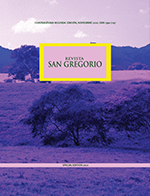Social communication of public authorities in the system of potential manifestations of corruption
DOI:
https://doi.org/10.36097/rsan.v1i42.1547Keywords:
Social Communication, The Public Authorities, Manifestation of Corruption, Democracy, Media Freedom,Abstract
The study analyzed works on corruption and social communication, documents of international organizations on these issues, proving that corruption results in costs for resources and affects the indexes of income and investment resources, formation of human capital and labor supply. Corruption is caused by: non-systematic nature of social and economic policies; underdevelopment of the legal system and legal provision of anti-corruption policy; limited performance of duties by control bodies etc. Based on the studies main forms of corruption manifestation were distinguished.Downloads
References
Aidt, T. S., (2016). Rent seeking and the economics of corruption. Constitutional Political Economy, 27(2), 142-157.
Amin, M., & Soh, Y. C. (2019). corruption and country size: evidence using firm-level survey data. Policy research working paper no. WPS 8864. Washington, D.C.: World Bank Group.
Chan, K. S., Dang, V. Q., & Li, T. (2019). The evolution of corruption and development in transitional economies: evidence from China. Economic Modelling, 83, 346-363.
Cheng, Y. (2020). The social-mediated crisis communication research: Revisiting dialogue between organizations and publics in crises of China. Public Relations Review, 46(1), 101769.
Cooray, A., & Dzhumashev, R. (2018). The effect of corruption on labour market outcomes. Economic Modelling, 74, 207-218.
Economist Intelligence Unit. (2020). Democracy index 2019. Retrieved fromhttps://www.eiu.com/topic/democracy-index
Elbahnasawy, N. G., & Revier, C. F. (2012). The determinants of corruption: Crosscountry-panel-data analysis. Developing Economies, 50(4), 311-333.
European Commission. (2014). Report from the commission to the council and the European parliament: EU anti-corruption report. Retrieved from http://ec.europa.eu/dgs/home-affairs/e-library/documents/policies/organized-crime-and-human-trafficking/corruption/docs/acr_2014_en.pdf
Gesualdi, M. (2019). Revisiting the relationship between public relations and marketing: Encroachment and social media. Public Relations Review, 45(2), 372-382.
Goel, R. K., Nelson, M. A., & Naretta, M. A. (2012). The internet as an indicator of corruption awareness. European Journal of Political Economy, 28(1), 64-75.
Gossel, S. J. (2018). FDI, democracy and corruption in Sub-Saharan Africa. Journal of Policy Modeling, 40(4), 647-662.
Huang, Y. H., Wu, F., & Cheng, Y. (2016). Crisis communication in context: Some aspects of cultural in Luence underpinning Chinese PR practice. Public Relations Review, 42(1), 201-213.
International Monetary Fund. (2016). Corruption: Costs and mitigating strategies. Retrieved from https://www.imf.org/external/pubs/ft/sdn/2016/sdn1605.pdf
Kalenborn, C., & Lessmann, C. (2013). The impact of democracy and press freedom on corruption: Conditionality matters. Journal of Policy Modeling, 35(6), 857-886.
Kolstad, I., & Wiig, A. (2015). Does democracy reduce corruption? Democratization, 23(7), 1198-1215.
Kumar, D., Yadav, G., & Sharma, S. G. (2017). Effects of information communication and technology (ICT) on corruption and social capital. International Journal of Science and Research, 6(3), 465-472.
OECD. (2015). Open government data. Retrieved from https://www.oecd.org/gov/digital-government/open-government-data.htm
Reporters Without Borders. (2020). 2020 World Press Freedom Index. Retrieved from https://rsf.org/en/ranking
Roper, J., & Hurst, B. (2019). Public relations, futures planning and political talk for addressing wicked problems. Public Relations Review, 45(5), 101828.
Starke, C., Naab, T. K., & Scherer, H. (2016). Free to expose corruption: The impact of media freedom, internet access and governmental online service delivery on corruption. International Journal of Communication, 10, 4702-4722.
Transparency International. (2020). Corruption Perceptions Index 2019. Retrieved from https://www.transparency.org/whatwedo/publication/corruption_perceptions_index_2019
UN Human Rights Council. (2010). Report of the Special Rapporteur on the promotion and protection of the right to freedom of opinion and expression. Retrieved from https://www.refworld.org/docid/4c0769f62.html
United Nations Development Programme. (2008). Tackling corruption, transforming lives: Accelerating human development in Asia and the Pacific. New Delhi, India: Macmillan.
United Nations Development Programme. (2018). Guide to corruption-free local government. Retrieved from https://corruptionfreecities.org/wp-content/uploads/2018/07/Guide-To-Corruption-Free-Local-Government-preview-.pdf
United Nations Global Compact. (2000). The ten principles of the UN Global Compact. Retrieved from https://www.unglobalcompact.org/what-is-gc/mission/principles
United Nations Global Compact. (2013). A guide for anti-corruption risk assessment. Retrieved from https://d306pr3pise04h.cloudfront.net/docs/issues_doc%2FAnti-Corruption%2FRiskAssessmentGuide.pdf
United Nations. (2018a). Global cost of corruption at least 5 per cent of world gross domestic product, secretary-general tells security council, citing world economic forum data. Retrieved from https://www.un.org/press/en/2018/sc13493.doc.htm
United Nations. (2018b). United Nations: E-government survey 2018. Retrieved fromhttps://www.unescap.org/sites/default/files/E-Government%20Survey%202018_FINAL.pdf (May 10, 2020)
World Economic Forum. (2020). The Global Risks Report 2020. Retrieved from http://www3.weforum.org/docs/WEF_Global_Risk_Report_2020.pdf
Xie, J., & Zhang, Y. (2020). Anti-corruption, government intervention, and corporate cash holdings: Evidence from China. Economic Systems, 44(1), 100745.


















